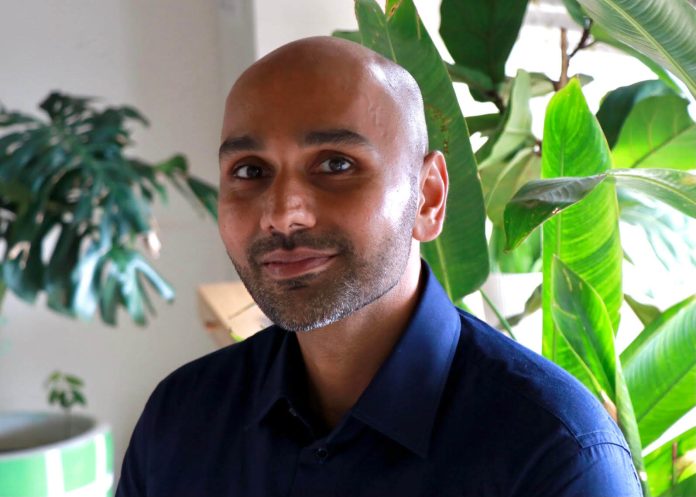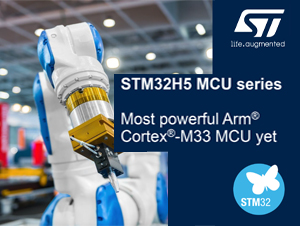Forests are a vital part of human existence thus it relies upon them how to conserve the forests and maintain the ecological balance. Over the last century, the excessive intervention of humans in nature has decreased the size of the forest area. Let’s imagine degrading environmental activities by humans lead to the extinction of the forests. Still, humans will find a way to survive. The only possible way to survive is working on technological advancements and it requires R&D(Research and Development). The better the R&D the better efficiency of the Product. To deal with Climate change, Environmental concerns, and CO2 emissions, Virtual Forest has emerged with the EMS that deals with the research and development of energy-efficient equipment. Virtual forest deals with the Motor Control Solutions market that has largely been dependent on imports from neighboring countries. This is due to the absence of an Ecosystem Player with deep domain expertise, who can offer local R&D, testing, integration, and bulk manufacturing — all with end-to-end project management support on a single platform. The virtual forest is catering to the need for actual forests with, the least human interference, efficient uses of technology, and improving energy efficiency in consumer appliances.
Here is the detailed Interview with the CEO of Virtual Forest, Omer Basith. Omer is responsible for Driving Strategy, Product, and Business Development. A serial entrepreneur, who carries 20 Years of domain experience in the field of Electronics System Design & Manufacturing (ESDM). Prior to starting Virtual Forest, he was the CEO of Solid State Systems. A company manufacturing capacitors, and Jossbox which is a retail marketing analytics company. He is extremely passionate about green energy and carbon reduction.
ELE Times: Can you share the product profile with us?
Omer: Virtual Forest specializes in Motor control and Human interface technologies that help in reducing emissions. Our vision is to develop motor control solutions for the journey to net zero. We have identified three technology pathways on which we will be developing our technology. The first is improving energy efficiency in the consumer appliance ecosystem, particularly with applications like air conditioning, BLDC ceiling fans, washing machines, solar pump controllers, and mixer grinders. We are already mass-producing inverter ACs (1 ton – 3.2 ton) and BLDC ceiling fans and are in the customer validation stages for inverter washing machines, solar pump controllers, and mixer grinders. These will enter into mass production in the coming year. The second pathway we are working on is electric mobility. We are currently developing motor controllers for electric vehicles (2&3 wheelers) and will soon be serving the EV ecosystem within India and South-East Asia. These motor controllers are already in the validation stages with large automotive companies. In addition, we are working on developing applications for last-mile logistics of up to a 1-ton payload and specialized farm equipment like spraying machines or crop dusters. The third pathway that we hope to start work on is direct air capture or large-scale air purification. These applications are still in their infancy stage in India, but there is strong demand for such products in urban centers like Delhi and Mumbai as well as regions in the north like Punjab and Haryana.
ELE Times: What technology is Virtual Forest using for the development of Motor Controllers? How is it different from the other technologies available in the market?
Omer: Our specialization in motor control coupled with our deep application-specific expertise has enabled us to create application-specific designs that ensure optimized hardware, FOC algorithms, and application layers. We often offer design-to-delivery support to our customers thus, playing the role of a technology partner rather than a pure-design house.
ELE Times: Can you provide an insight into the applications of these technologies for the EV market?
Omer: With EV sales hitting a record high, the government’s aggressive push for faster adoption of EVs, and the global shift towards green technologies, there is a strong market for localized crucial EV components. In our view, India is taking the right steps in its quest for electrification but the missing link is the lack of in-house expertise to develop critical components like motor controllers, BMS (Battery Management Systems), Instrument clusters, and Interface Electronics. These should be prioritized for localization in order to make India a global hub in electric mobility. We will be tapping into this demand by providing locally developed, energy efficient 3-15 KW Motor Controllers which will not only assist in realizing the ‘Make in India’ mission but also help India in its sustainability endeavors.
ELE Times: Why focusing on design is important in the electronics market?
Omer: The cost to make an electronic product is the sum of its material costs (bill of materials), IP costs (generally in the form of license fees), and manufacturing costs. So far most of the government’s attention has been towards addressing India’s disability in material costs when compared with China through the deployment of multiple Production Linked Incentive (PLI) schemes. The PLI schemes help lower overall product costs by incentivizing product sales that are a result of fresh investments in manufacturing capacity. The PLI schemes target strategic high-growth segments like automotive, smartphones, consumer appliances, and renewable energy solutions. PLIs help ensure that a greater portion of product value addition that results from domestic demand is captured within our borders. However, The PLI methodology mostly ignores IP development costs. While PLIs can recognize a small percentage of investments (up to 10%) for R&D costs like testing equipment, jigs, and fixtures. It is clear that they are aimed squarely at the promotion of manufacturing rather than incentivizing green fields in R&D. This is a lost opportunity as IP makes up a large portion of the value of electronic products. An average of 25% irrespective of their manufacturing location, all value addition on electronics used in industries like electric vehicles and energy-efficient electronics is being captured outside the country. Any long-term vision to boost the electronics manufacturing ecosystem must contain a plan to comprehensively build out domestic R&D capacity through necessary regulations and incentives.
ELE Times: What can be done to accelerate the R&D in the electronics segment in India?
Omer: A lot can be done to boost R&D in the electronics segment in India, like Implementing policies that incentivize R&D. Beginning with the expansion of the recently introduced Design Linked Incentive (DLI) scheme to include designs for embedded systems could be an initial step. Increasing import duties on completely knocked-down or semi-knocked-down electronics will lend support to local manufacturers. Harnessing the highly-skilled professionals in the electronics hardware and software space in India will help solve the talent shortage in the industry. Lastly, we need to foster a culture of innovation wherein enterprises are supported with their R&D process which mostly involves longer time frames. To deliver sustainable products, we have to invest a lot in the beginning and not seek any immediate ROI.
ELE Times: What are your views on the future of the electronics industry?
Omer: The future of electronics manufacturing looks promising as the demand for electronic products is expected to reach $400 billion by 2025. However, it is important to ensure that this rise in demand is met by domestic manufacturers rather than importing from outside. This is true for electronic components. Many products that are ‘Manufactured in India’ are more accurately described as ‘Assembled in India’ as crucial subsystems like motor controllers are often imported. The government has realized that a vibrant domestic electronic components ecosystem not only secures national autonomy for crucial technologies but also presents an opportunity to drive major economic activity. With several initiatives like the Make in India program, the National Policy on Electronics (2019), the Production Linked Incentive (PLI) Scheme for the electronics sector, SPECS (Scheme for Promotion of Manufacturing of Electronic Components and Semiconductors) scheme as well as Electronics Manufacturing Clusters (EMC 2.0) Scheme, and many others, we are confident that India is headed in the right direction. The only area that needs work is investing in R&D and innovation to capture the full value of electronic goods within our borders.
ELE Times: Why is India unable to break free from the chain of electronic imports from china?
Omer: Everyone, including India, is tied to Chinese component manufacturers very deeply. This phenomenon cannot be attributed to just cheap labor and low cost but the fact that China has a strong supply chain and modern technology prowess on its side. This in no way means that you can only manufacture electronics in China. If R&D, talent, and strategic policies are implemented, India too can become an electronics manufacturing powerhouse.
There are certainly efforts for de-linking but there is still a long way to go. Even in the case of products we manufacture, we have made a conscious effort to identify component supplies from China and other locations and to have an alternate plan in case of any geopolitical tensions or any other reason that might impact supplies. The reasons behind this trend can be a lack of domain expertise and R&D, long lead times, lack of aggregate demand, and lack of competitive pricing.
ELE Times: Despite the number of incentive schemes by the govt., why is India unable to revolutionize as the electronics manufacturing hub?
Omer: There are multiple bottlenecks and infrastructural challenges that need to be addressed in order to facilitate the growth of the Indian electronics industry. First and foremost, is the lack of electronics R&D infrastructure. There are a variety of factors behind this stunted growth but one reason that is often cited as a key ecosystem challenge is long development lead times. The design of commercialization timelines in the Indian electronics ecosystem can often be restrictive. There are several industry cautionary tales where long development cycles led to product obsolescence before launch resulting in dead R&D investments. The second major issue is the scale conundrum. Procuring raw materials at the low costs required for competitive end-product pricing is only possible through economies of scale. But that scale of procurement cannot be reached if manufacturers cannot commit large volumes at the onset.
This is a bit of a chicken and egg situation, the most likely way out of which will require a long-term vision backed by significant amounts of capital. Here again, the PLI scheme seems to benefit large companies. Even if small and medium enterprises get into component manufacturing, they may not even be able to qualify for the PLI scheme. Because certain aspects like revenues and scale are completely skewed towards large industries. This, in turn, is going to increase the gap between larger companies and SMEs as larger companies will now have access to a significant incentive basis for the investments they can make. Apart from these, there are standard problems like capital availability, a skilled workforce, etc. But it’s better now than it has ever been. There is a huge opportunity to develop manufacturing capabilities and with time I am optimistic that government schemes will accommodate these luring issues.
ELE Times: What are your plans for adding manufacturing capabilities?
Omer: We have a unique business model in which we don’t own any factories or manufacturing facilities. We utilize the existing infrastructure in the country for mass production on a contractual basis. We mostly look after research and development as well as the sales side of the business. However, if any precision manufacturing is required which has to be done in-house in the near future then we can consider adding a manufacturing capability. It will be based on the situation.
ELE Times: What do you think about the future of the EV sector in India?
Omer: The demand for electric vehicles (EVs) is surging in India. According to data, the EV market is expected to grow at a CAGR (Compound Annual Growth Rate) of 94.4% from 2021 to 2030. There are so many innovative startups coming up in the space with path-breaking EV technologies that are cost-efficient and powerful. The shift to greener technologies has accelerated the adoption of EVs. Conducive financing options are making it all the easier for the end consumer to purchase an electric vehicle for a significant tax rebate with minimum maintenance cost. The government is pulling all stops in terms of tax subsidies, policies, incentives, etc., leading consumers to choose an electric vehicle over a fossil fuel car.
The 2W segment is especially seeing an uptick as it contributes a lion’s share to auto sales in India. This presents a unique opportunity for Indian manufacturers to not only capitalize on the domestic market but also capture global market share. The domestic battery manufacturing ecosystem has immense potential in contributing to India’s exports. If India cracks a successful 2-wheeler EV model that is suitable for the Indian terrain and meets global quality standards. It will surely be able to cement a dominant position in the two-wheeler segment globally.











